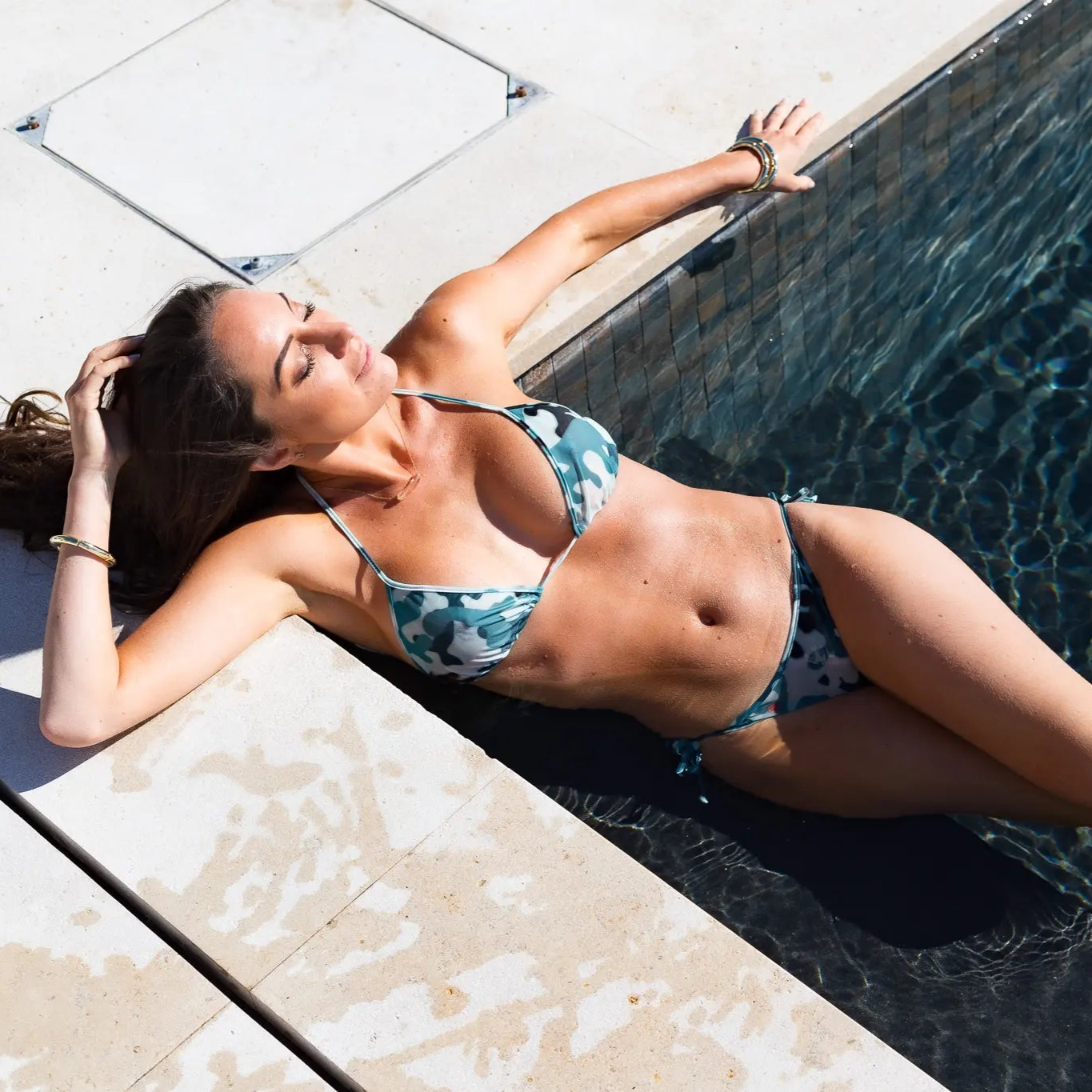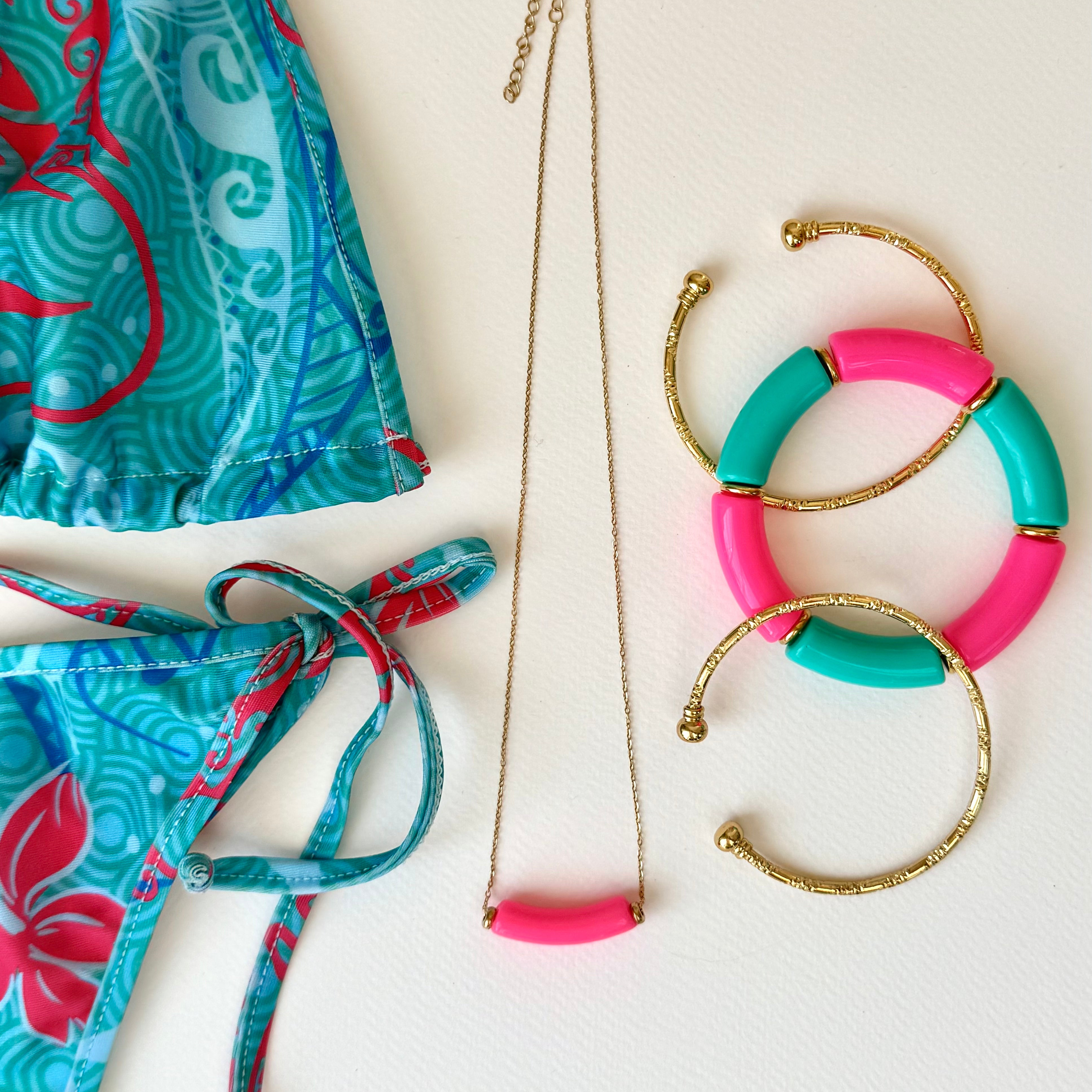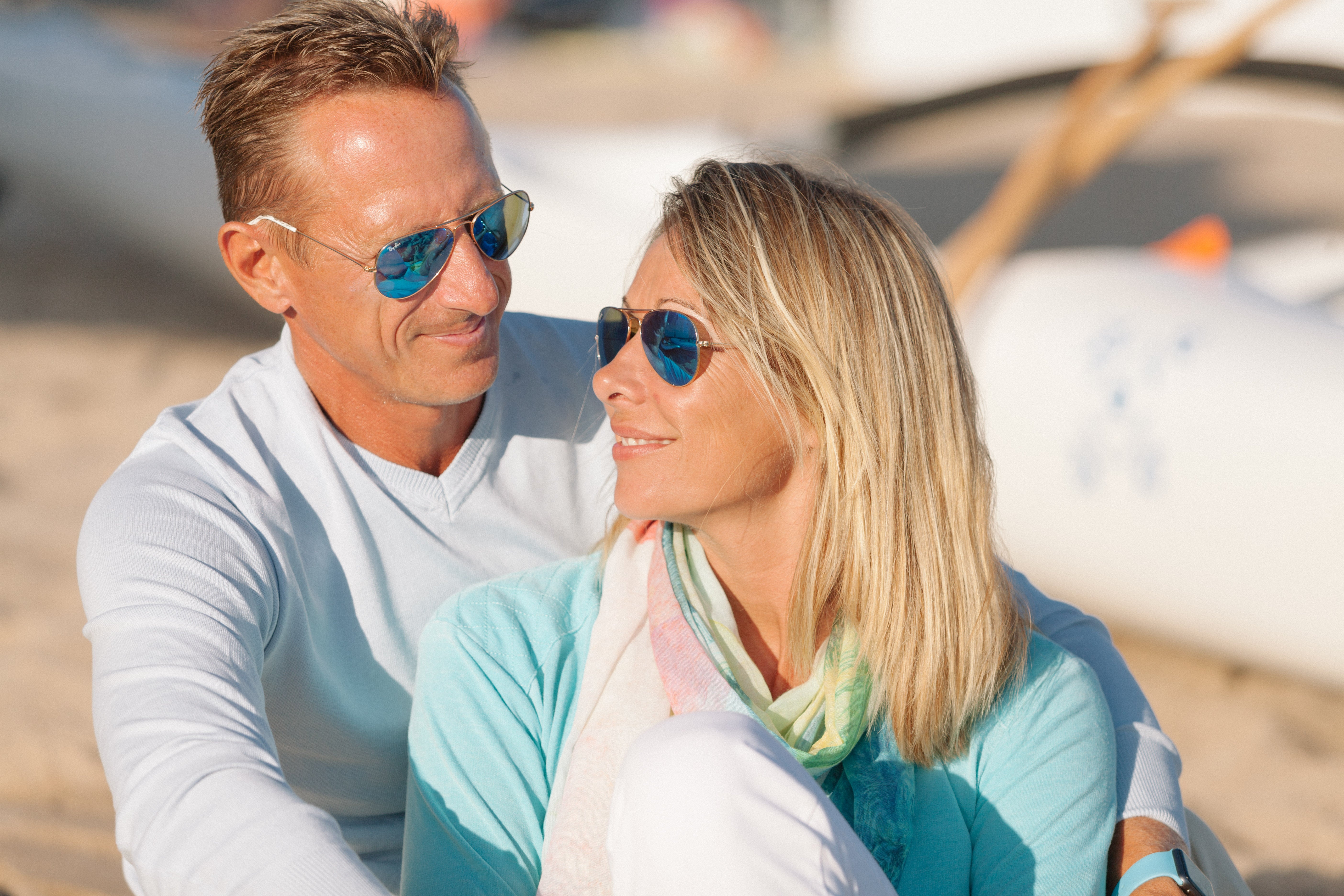FAQ
Tanning
How to get an even tan with minimal streaks?
The secret is to allow time for the covered areas to catch up with the uncovered areas.
The textile acts as a sunscreen while only letting through the UV A & B necessary for tanning, so it is not necessary to apply cream underneath. You tan about 3x slower under your swimsuit, so you need to slow down the tanning of uncovered areas with a dry oil with a minimum SPF 30 index until it balances out.
All you have to do is move the strings of your swimsuit from time to time because being lined, the sun's rays do not pass through.
What does the sun protection factor (SPF or SFP) of my sunscreen correspond to?
The protection index (IP) or Sun Protection Factor (SPF) indicates the level of protection against UVB rays. It is therefore important to refer to it to choose a product adapted to your skin type, as well as to the conditions of exposure to the sun.
This protection is expressed in the form of a numerical index (6, 10, 15, 20, 30, 40, 50 and 50+), which must be displayed on all products. The higher it is, the stronger the sun protection. This index actually reflects the time during which it is possible to expose yourself before getting sunburned.
The calculation is simple : you need to take the number of minutes after which the skin generally gets sunburned without sun protection (15 minutes, for example), and multiply this number by the SPF. With an SPF 10, for example, you get 15 minutes x SPF10 = 150 minutes. In this case, the sunburn will therefore appear after about 150 minutes (2h30).
Please note that these are theoretical calculations and, in reality, other factors come into play, such as your skin phototype and the intensity of UV rays where you are. (source BIAFINE)
How can a fabric act as a sunscreen?
The special polyester or polyamide yarn has a property that blocks most of the burning UV-B rays, but allows a sufficient percentage of browning UV-A rays to pass through. The fabrics used work like a sunscreen.
Can you tan without UV-B rays?
No, the fabric used was woven using a special polyester that allows only a small percentage of the sun's UV-B rays to pass through (about 4%). The skin needs this small percentage to trigger the melanogenesis mechanism.
Can the wearer get "sunburn" after "sunbathing"?
No! It is established with measurements that since only a small percentage of the sun's UV-B rays reach the skin, it is never burned or damaged and therefore there is no peeling.
What is the risk of breast cancer?
According to the ARC, there is no established link between sun exposure and breast cancer.
https://www.fondation-arc.org/cancer/cancer-sein
A diet rich in vitamin D combined with regular exposure to the sun would even reduce the risk of developing breast cancer. See the study by clicking on the link below:
https://www.e3n.fr/alimentation-et-soleil-quel-lien-avec-le-cancer-du-sein .
On the other hand, too prolonged and too frequent exposure can damage the skin and even cause the appearance of skin cancer.
Delivery, Exchange & Refund
Delivery
Answer
Exchange & Refund
Answer
The Bikunu brand
Does the Bikunu brand have a virtuous and environmentally friendly process?
- The fabrics and threads used as well as the printing process are Oeko-tex certified.
- The making of our jerseys uses approximately 50% less fabric than a standard lined jersey.
- All our packaging is made from recycled or "Reuse" materials, such as the PVC pouch which allows you to put your wet swimsuit inside for years.
- We use carbon neutral carriers for shipping.
- All our production is located in France on the Côte d'Azur to favor local and French jobs.
- The fabrics are manufactured in Europe using environmentally friendly processes.
- Our vehicles are hybrid or electric.
- All our lighting is LED.
- Our premises are heated with heat pumps.
Let's stay in touch
Do you have questions about your order or a general request?





